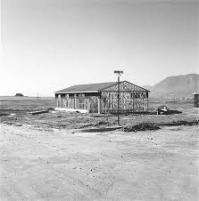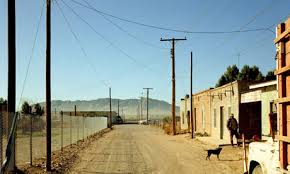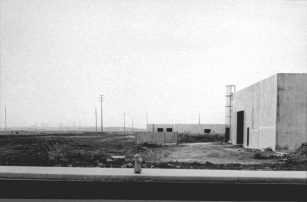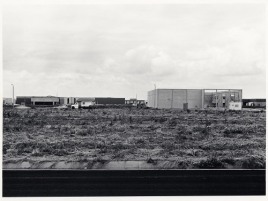Read Sean O’Hagan’s article on the New Topographics exhibition and publication: http://www.guardian.co.uk/artanddesign/2010/feb/08/new-topographics-photographs-american-landscapes and watch this video of Lewis Baltz talking about his work: http://www.tate.org.uk/context-comment/video/tateshots-lewis-baltz
Write down your own responses to the work of any of the practitioners O’Hagan mentions in his article, and describe your thoughts on typological approaches.
O’Hagan’s article written in February 2010 states that the term “new topographics” was coined 35 years ago by curator William Jenkins in relation to a show of 168 formal, black and white images that “seemed to posit an aesthetic of the banal“. Photographer Frank Gohlke, exhibiting in the show stated “What I remember most clearly was that nobody liked it, I think it wouldn’t be too strong to say that it was a vigorously hated show.”
Regardless of the audiences opinion of the photographs, Jenkins had recognised a shift in the view-point of the photographers of the time. He speculated the reason to be two-fold, firstly that as photographers they only photographed what was there and what was there was the new typology of modern America; and secondly, that there was an element of rebellion against “the tyranny of idealised landscape photography that elevated the natural and the elemental“.
I have no doubt that these photographs did genuinely bore the audience, but that they also shocked the audience – could a nation that was becoming a significant world power actually suffer from this level of mediocrity?
In researching this article and the photographers named I have found that the environmental (landscape) image of America has little changed across almost 100 hundred years. This is especially true if you look at images of middle American, what I mean by that it the America known to the Americans rather than to the tourists. Different photographers demonstrate different styles and frame their images from a slightly different view point, but fundamentally they are very much the same. Initially this surprised me, but on further reflection these photographs show the environment and the culture, neither of which has altered much in rural America. I have no doubt the exactly the same could be said for rural Britain, or any other country for that matter. Change occurs out of either necessity or wealth, if neither are available conditions remain constant.
New Topographic Photographers – Frank Gohlke, Robert Adams, Stephen Shore, Lewis Baltz and Nicholas Nixon
Of the new topological photographers mentioned by O’Hagan, Lewis Baltz is be far my favorite.
Lewis Blatz (1945 – 2014) interview
Salient points:
Photography is the only deductive art form, it starts with a world that is perhaps overfull and then needs to sort out what is meaningful. It needs to understand ‘what is the subject of the photograph?’ there a number of potential issue – philosophical, social, aesthetic or political…
What Baltz was interested in was the ‘ordinary’ capturing, recording his own experience of his environment. But at this time it was taboo “oddly obscene for photography to record“, nobody wanted to “face the horror of our environment“.
Different people respond differently to different art, “I love looking at Matisse, but Duchamp is a thousand times more interesting. […] For me a work of art is something to think about, more than something that is interesting to look at“.
Baltz does not believe that he needs people within his images because they are full of human effort; the placed for people is in front of the art as the viewer. Without the viewer art, anybodies art, does not exist.
Garry Berger pays tribute to Baltz
He was an intelligent and creative photographer and a leader in the field of what has come to be known as ‘conceptual photography’. “For much of his career he was a determined minimalist, but while that might suggest – along with the conceptual label – a cool, cerebral approach, that most certainly did not mean a lack of heart or passion. His understated, stripped down, formally elegant pictures burn with an imagistic intensity and seductiveness that belies their spareness.”
Baltz came to prominence, with the renowned 1975 exhibition at George Eastman House, New Topographics (as reviewed by O’Hagan above). Stating of his photographs “I wanted it to appear as though the camera was seeing by itself.” Not only were these New Topographical photographers “escheweing the overblown romanticism of Ansel Adams’ era, [but their] lack of overt expression emphasised another crucial point; that photography was photography, and art was art, and never the twain did meet!” Except perhaps hanging in a gallery wall…
The work of the 70’s depicted a landscape created by those only interested in the bottom line – the profit margin. From the mid-80’s onwards, Lewis addressed the influence of technology upon ecology and society “The blurred interaction, of humans and machines, that take us deeply into ambiguous cyberworlds.”
References
http://www.bjp-online.com/2014/11/lewis-baltz-tribute-gerry-badger/




